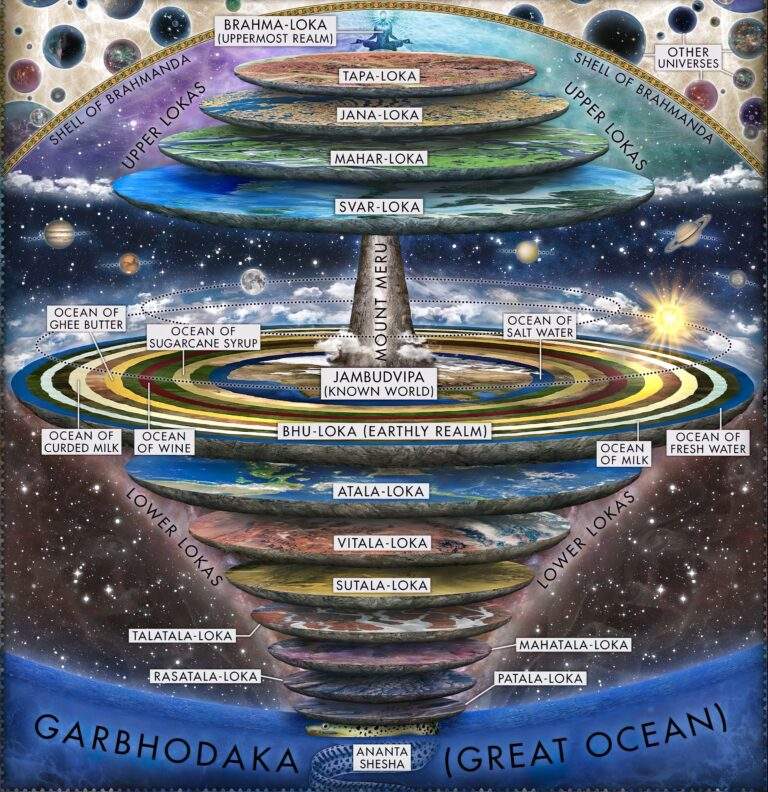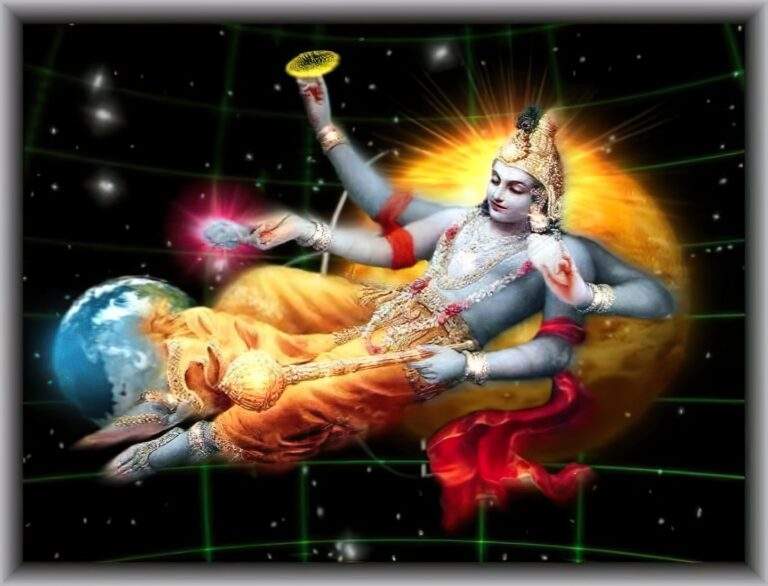- Reading the below scriptural content " with patience " helps you get more juice from these topics. -

यद्गत्वा न निवर्तन्ते तद्धाम परमं मम ॥ ६ ॥
मूर्धभि: सत्यलोकस्तु ब्रह्मलोक: सनातन: ॥ ३९ ॥
“ The spiritual world may certainly be a mystery to those without sufficient knowledge or experience.
Many traditions, religions or cultures from around the world tell of another world, the afterlife or a heavenly or spiritual abode.
But many of them do not say much about it, but only give hints as to its real nature, leaving the rest up to one’s imagination ( which is not even a subject of the imagination & our senses ).
The Vedic texts, however, have many descriptions of what the Abode of God is like, in fact more than you will find anywhere else.
We will discuss a few of these descriptions from the ancient scriptures, to get a good idea of the conditions prevailing there.
Chaitanya charitramrit by Krishnadasa Kaviraja Gosvami has some important verses that summarize what many of the Vedic texts describe, and explain the nature of the spiritual world.
In the Adi-lila portion of his Sri Chaitanya-caritramrita, Chapter Five, we find that the spiritual sky is called Vaikuntha, which means where there is no anxiety.
It is all-pervading, infinite, and the supreme abode.
It is filled with innumerable spiritual planets, each of which is a residence of one of the unlimited expansions of the Supreme Being.
The highest planet is called Krishnaloka / Goloka, which is the residence of Lord Krishna Himself, the source of all other expansions of God
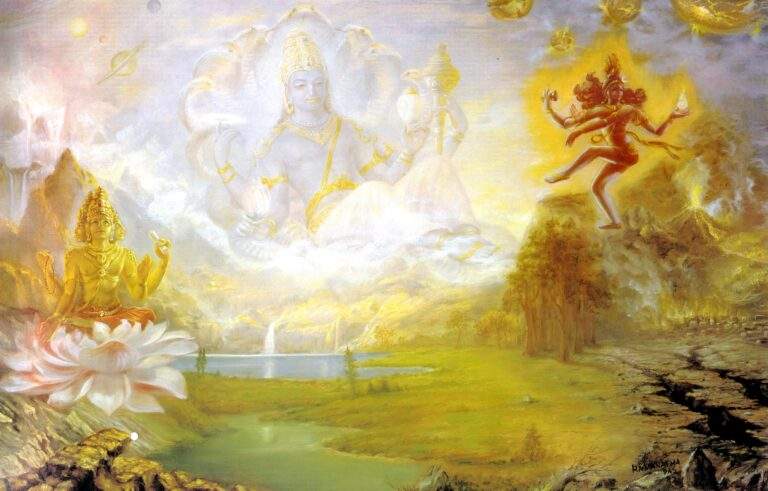
WHAT IS THE DISTANCE AND SIZE OF THE SPIRITUAL WORLD ?
śata, sahasra, ayuta, lakṣa, koṭī-yojana
eka eka vaikuṇṭhera vistāra varṇana
( Chaitanya Caritramrit – Madhya २१.४ )
“The breadth of each Vaikuṇṭha planet is described as 8 miles multiplied by one hundred (100), by one thousand (1000), by ten thousand (10,000), by one hundred thousand (100,000), and by ten million (10,000,000). In other words, each Vaikuṇṭha planet is expanded beyond our ability to measure.
The Vaikuṇṭha planets begin 26,200,000 yojanas (209,600,000 miles) above Satyaloka (Abode Of Lord Brahma).
Thus the Viṣṇu Purāṇa describes that the covering of the universe is 260,000,000 yojanas (2,080,000,000 miles) away from the sun.
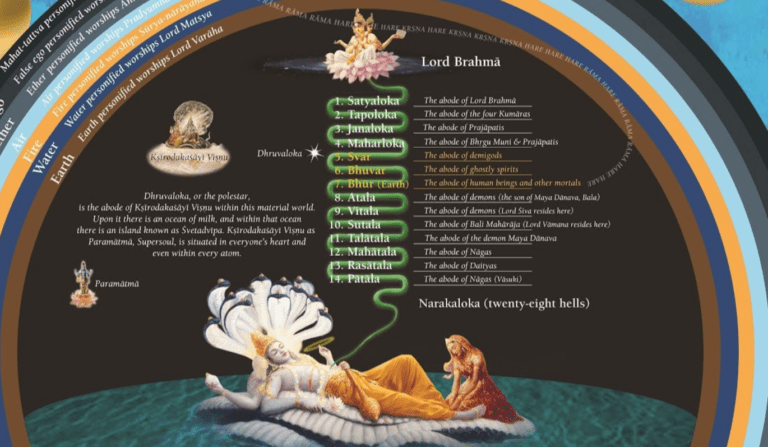
TRAVELLING TO THE DIFFERENT PLANETS ?
“ In the material sky, even if we approach the highest planet Brahmaloka, ( what to speak of the moon ), we will find the same conditions of life, namely
- Birth ( जन्मना )
- Disease ( बीमारी / रोग लगना )
- Old age ( बूढ़ा होना )
- Death ( मरना )
No planet in the material universe is free from these four principles of material existence.
Therefore the Lord says in Bhagavad Gita that the living entities are traveling from one planet to another ( taking the rebirths ) not by mechanical arrangement but by a spiritual process.
Bhagavad Gita informs us how to travel to the higher planetary systems (devaloka) with a very simple formula: यान्ति देवव्रता देवान्पितॄन्यान्ति – One need only worship the particular demigod of that particular planet and in that way go to the moon, the sun or any of the higher planetary systems.
But one who wants to approach the supreme planet, Krsnaloka, or any of the other planets within the spiritual sky, will not meet with these four material inconveniences.
Amongst all of the planets in the spiritual sky of Vaikunthas, there is mainly one supreme planet called Goloka Vrndavana, the abode of the original Personality of Godhead Sri Krishna.
All of this information is given in the Bhagavad Gita, Srimad Bhagavatam, Brahma Samhita, Chaitanya Caritramrit, etc. and we are given through its instruction & information how to leave this material world and begin a truly blissful life in the spiritual sky
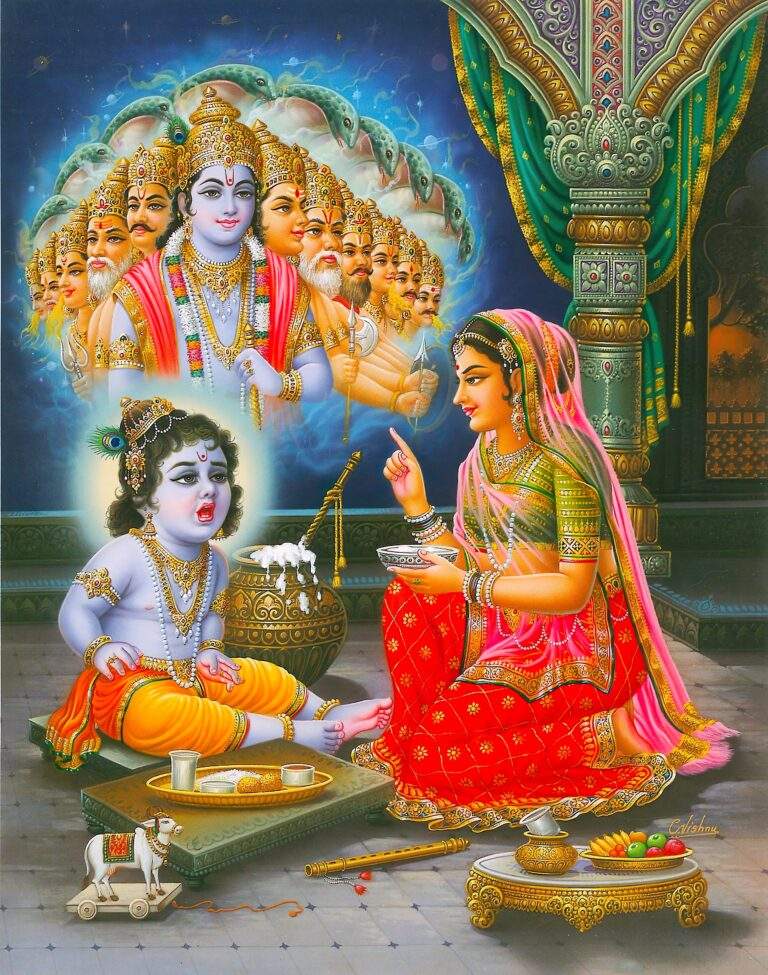
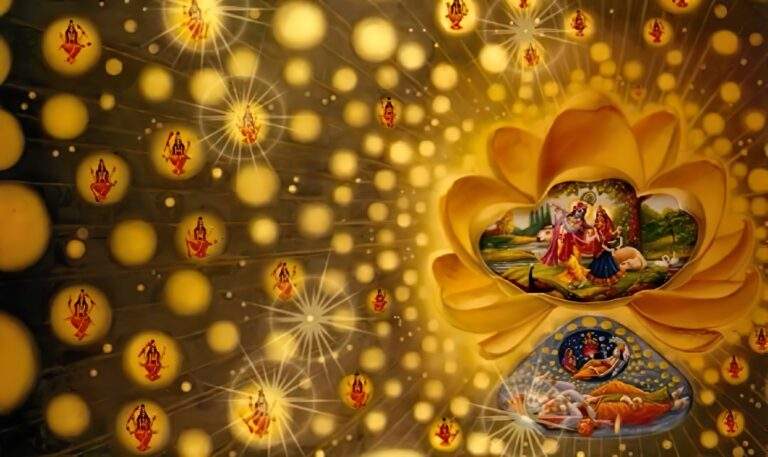
ELIGIBLITY TO ENTER INTO THE ABODE OF GOD ( AFTER LIFE )
The spiritual world can be reached by one who is nirmana-moha.
What does this mean?
We are after designations in this material world.
Someone wants to become Lord, someone wants to become the president or a rich man or a king or something else.
As long as we are attached to these designations, there is not doubt that we are attached to our body because designations belong to the body.
But we are not these bodies, and realizing this is the first stage in spiritual realization.
We are associated with the three modes of material nature ( goodness, passion & ignorance ), but we must become detached through devotional service to the Lord.
If we are not attached to devotional service to the Lord, then we cannot become detached from the modes of material nature. A FACT.
Designations and attachments are due to our lust and desire, our wanting to lord it over the material nature.
As long as we do not give up this propensity of lording it over material nature, there is no possibility of returning to the kingdom of the Supreme, the sanatana-dhama.
That eternal kingdom, which is never destroyed, can be approached by one who is not bewildered by the attractions of the false material enjoyments in the life, who is situated in the Service & Bhakti of the Supreme Lord.
One so situated can easily approach that supreme abode. (The spiritual world)
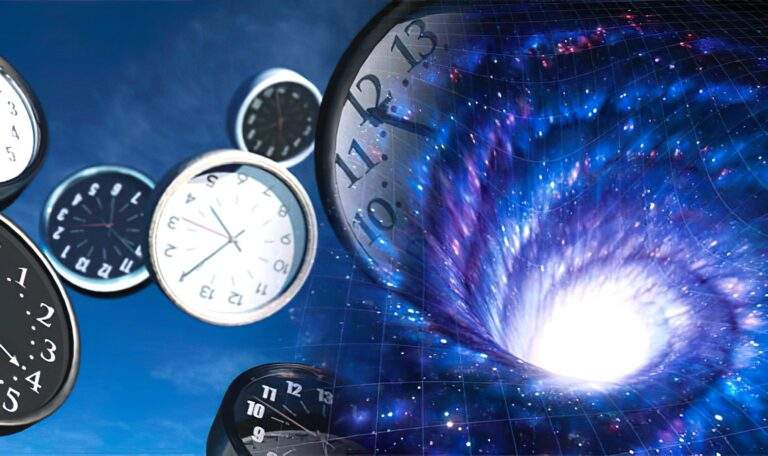
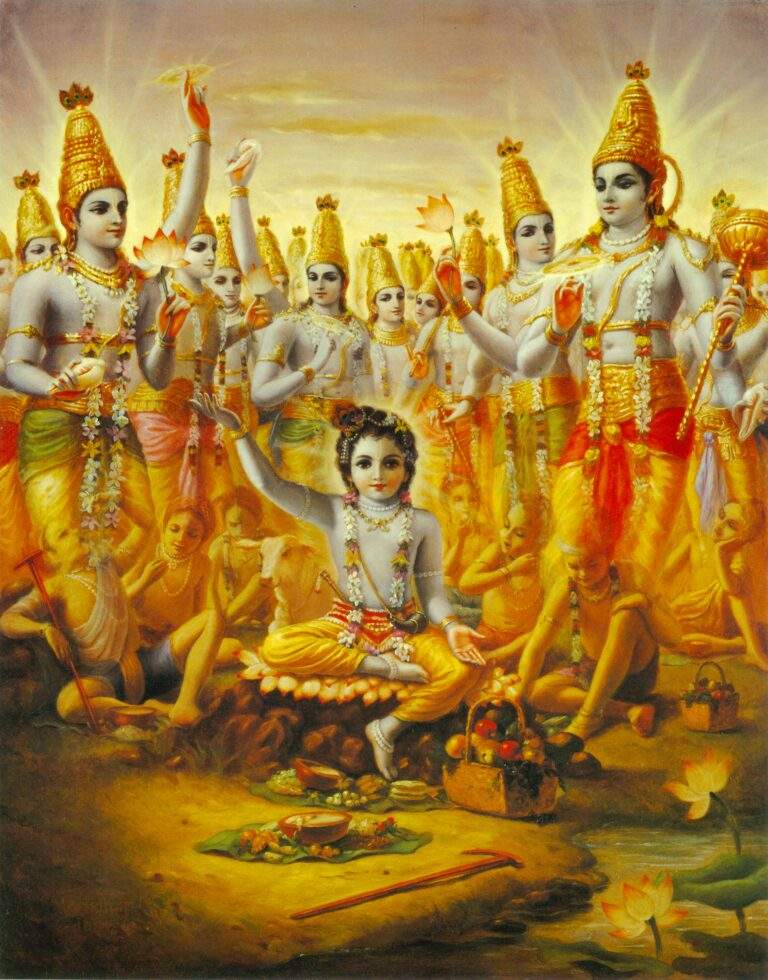
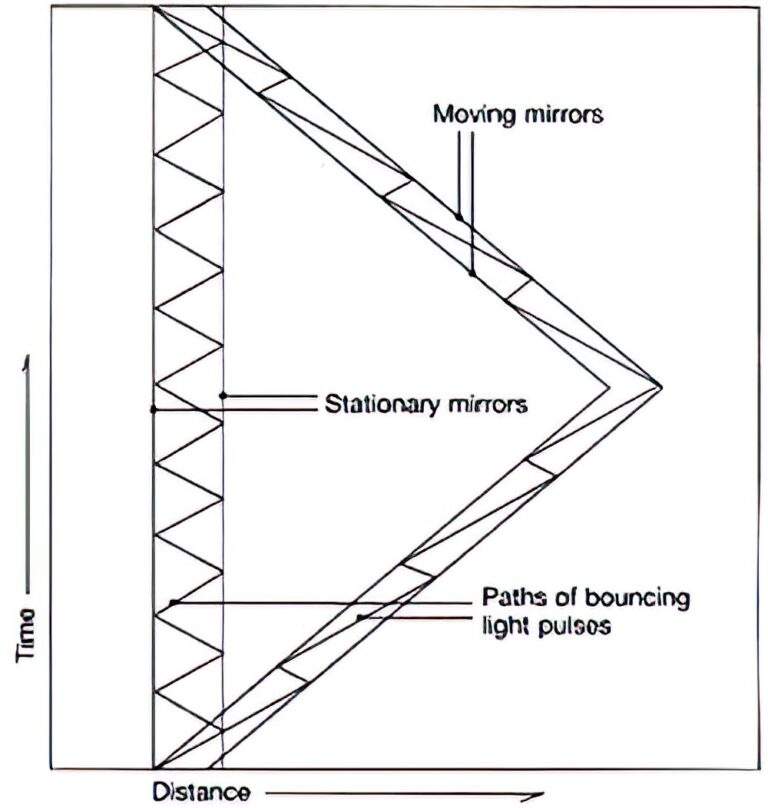
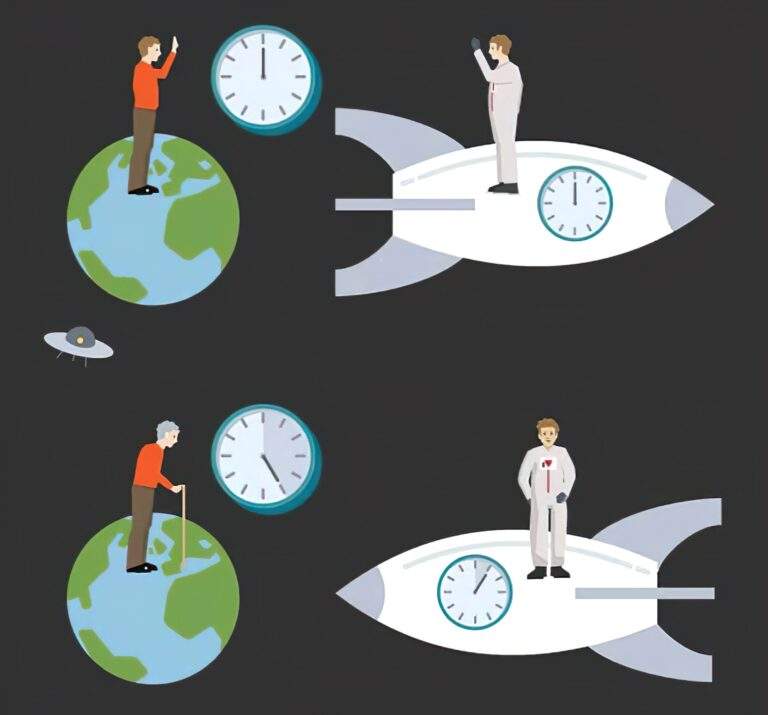
PARADOXES OF TIME AND SPACE ?
Imagine that a man travels into outer space on a rocket at near the speed of light and then returns to earth.
According to Einstein’s theory of relativity, the man will find he has not aged as much as his identical twin brother who stayed home. Time will have passed more slowly on the rapidly moving rocket than on the slow-moving earth.
This disparity in the passage of time is often called time dilation.
This story of the twins is called the twin paradox, since it runs contrary to our expectations. Yet a simple diagram can easily show how it works.
There are many examples show that modern physics allows for remarkable transformations of space and time.
And apparently, similar ideas are found in Vedic literature.
We find an example in the pastime of a king named Kakudmi, who was able to travel to the Abode of Lord Brahma ( Satyaloka / Brahmaloka ) and experience Lord Brahma’s scale of time.
Here is the pastime, as related in the Srimad-Bhagavatam:
Taking his own daughter, Revati, Kakudmi went to Lord Brahma in Brahmaloka, and inquired about a husband for her.
When Kakudmi arrived there, Lord Brahma was engaged in hearing musical performances by the Gandharvas and had not a moment to talk with him.
Therefore Kakudmi waited, and at the end of the musical performances he offered his obeisances to Lord Brahma and thus submitted his long-standing desire.
After hearing his words, Lord Brahma, who is most powerful, laughed loudly and said to Kakudmi, “O King, all those whom you may have decided within the core of your heart to accept as your son-in-law have passed away in the course of time.
27 catur-yugas have already passed.
Those upon whom you may have decided are now gone, and so are their sons, grandsons, and other descendants.
You cannot even hear about their names.”
( Srimad-Bhagavatam 9.3.28-32 )
1 chatur-yuga lasts 4,320,000 earthly years.
With this information, we can estimate the rate of time dilation on Brahmaloka.
If the concert given by the Gandharvas took about 1 hour in Brahma’s time scale, then that hour must correspond to 27 times 4,320,000 earth years.
It is interesting that this estimate closely matches one for time dilation in similar pastime involving Brahma.
This is the pastime of the brahma-vimohana-lila, or the bewilderment of Brahma by Krishna.
Several thousand years ago, Krishna descended to the earth as an avatara and was playing as a young cowherd boy, tending calves in the forest of Vrindavan ( south of present-day New Delhi ).
To test Krishna’s potency, Brahma used mystic power ( yogic siddhi ) to steal Krishna’s calves and cowherd friends and hide them in suspended animation in a secluded place.
He then went away for a year of earthly time to see what would happen.
Krishna responded to Brahma’s trick by expanding Himself into identical copies of the calves and boys.
So, when Brahma returned, he saw Krishna playing with the boys and calves just as before. Brahma became bewildered.
Checking the boys and calves he had hidden, he found they were indistinguishable from the ones playing with Krishna, and he couldn’t understand how this was possible.
Finally Krishna revealed to Brahma that these latter boys and calves were identical with Himself, and He allowed Brahma to have a direct vision of the spiritual world.
Now, it turns out that even though Brahma was absent for one earth year, on his time scale only a moment had passed.
The Sanskrit word used here for a moment of time is truti.
( Srimad-Bhagavatam 10.13.40 )
There are various definitions of a truti, but the Vedic astronomy text called the Surya-siddhanta defines a truti to be 1 of a second.
If we accept this figure, then 1 year on earth corresponds to 13,750 of a second in the time of Brahma.
As pointed out before, King Kakudmi’s visit to Brahmaloka took 27 catug-yugas = 4,320,000 earth years.
If we x this by 1 we find that in Brahma’s time King Kakudmi’s visit lasted 3,456 seconds, or just under an hour of Brahmaloka.
This is consistent with the pastime that the king had to wait for a musical performance to finish before having a brief conversation with Lord Brahma.
This is about the Brahmaloka ( which is the highest planet of this material universe ), We still had not discussed about the spiritual universe which begins after the Abode of Lord Brahma – Brahmaloka.

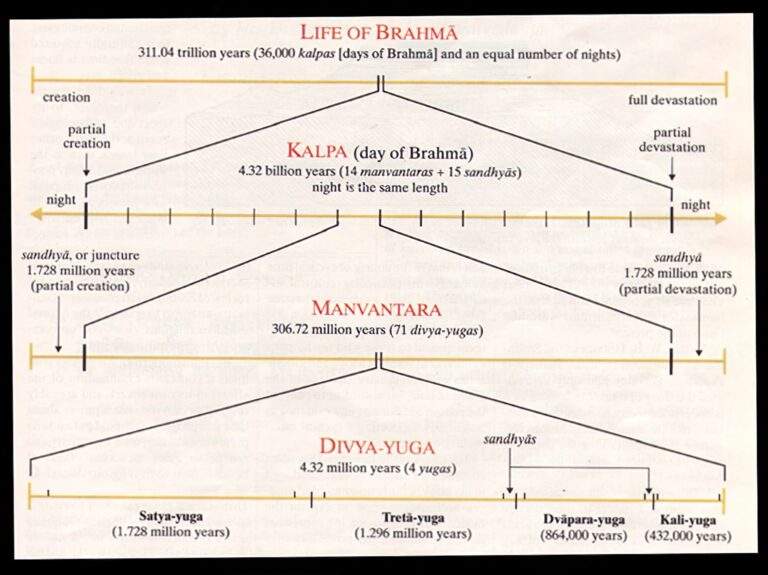
WHAT IS THE DURATION OF LORD BRAHMA'S DAY ?
“ How long we live greatly depends on what kind of body we have.
For example, an insect might stay around for only a month, while a human being sometimes lasts for 100 years.
And as the time-honored Bhagavad Gita informs us, the inhabitants of planetary systems higher than ours have bodies of a still higher quality and so live much longer than we do here.
In fact Lord Brahma, the administrative demigod who resides on the highest planet in the universe, lives not a moment less than 311 trillion 40 billion years.
Of course, modern scientists have some inkling that a single 24-hour span on some higher planets may equal an earth year or maybe more, but they have no idea just how much more.
Bhagavad-gita ( 8.17) tells us this about the length of Lord Brahma’s day and night:
सहस्रयुगपर्यन्तमहर्यद्ब्रह्मणो विदु: ।
Translation:
- By human calculation, 1,000 great ages taken together is the duration of Brahma’s day.
- And such also is the duration of his night.
The duration of a day in the life of Brahmā is 4,320,000,000solar years. So for this period Brahmājī rests in yoga-nidrā within the body of the Garbhodakaśāyī Viṣṇu, the generator of Brahmā.
Thus after the sleeping period of Brahmā, when there is again creation by the will of the Lord through the agency of Brahmā, all the great ṛṣis again appear from different parts of the transcendental body, and Nārada also appears.
Here’s the calculation in detail,
- First, we add up the 4 yugas (ages) – Satyuga, Tretayuga, Dwaparyuga, Kaliyuga. These 4 yugas = 1 divya-yuga(great age), or 4.32 million years.
- Now, when we multiply x by 1,000, what we come up with – and this is a mere 12 “hours”( 1 daytime ) in Lord Brahma’s life – it comes as 4.32 billion earth years.
- His daytime + His nighttime comes to = 8.64 billion earthly years.
- What’s more – 360 of these days and nights make 1 year of Lord Brahma’s age.
- He lives for a full 100 of these “years.”
All of this may seem fantastic to us, but as Einstein learned some years ago, time is relative.
Take, for example, an amoeba, whose life span is less than an hour.
If we could explain our life span to the amoeba, just think how flabbergasted he would be ?
In the same way, although we may be astounded by Brahma’s life span, to him it seems quite normal and, if anything, rather short.
This process has been explained by the Original Supreme Personality Of Godhead Sri Krishna in the Bhagavad Gita, as well as we can find the references from many scriptures about these processes, which began in the beginning of the creation by Lord Sri Krishna.
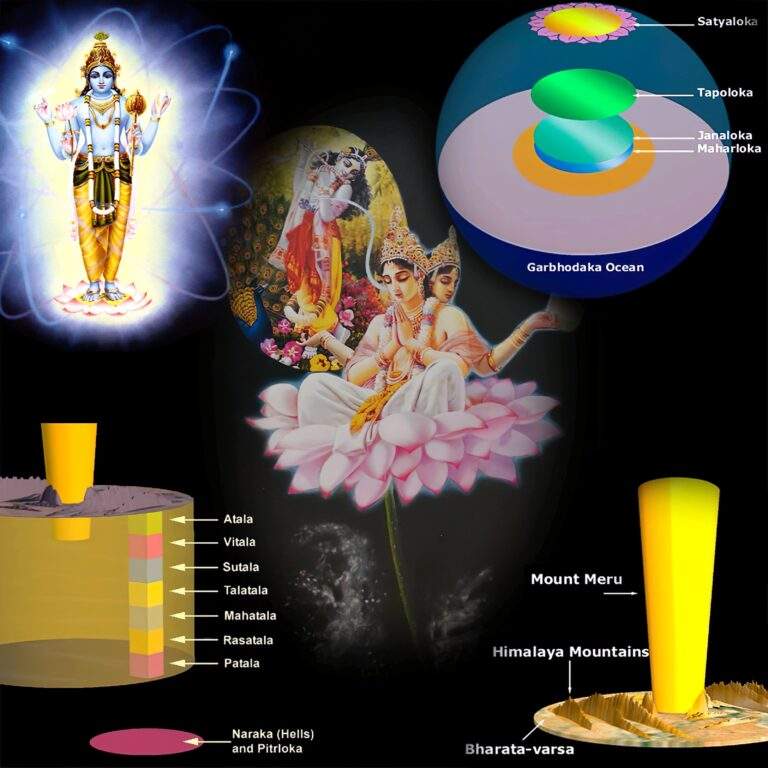
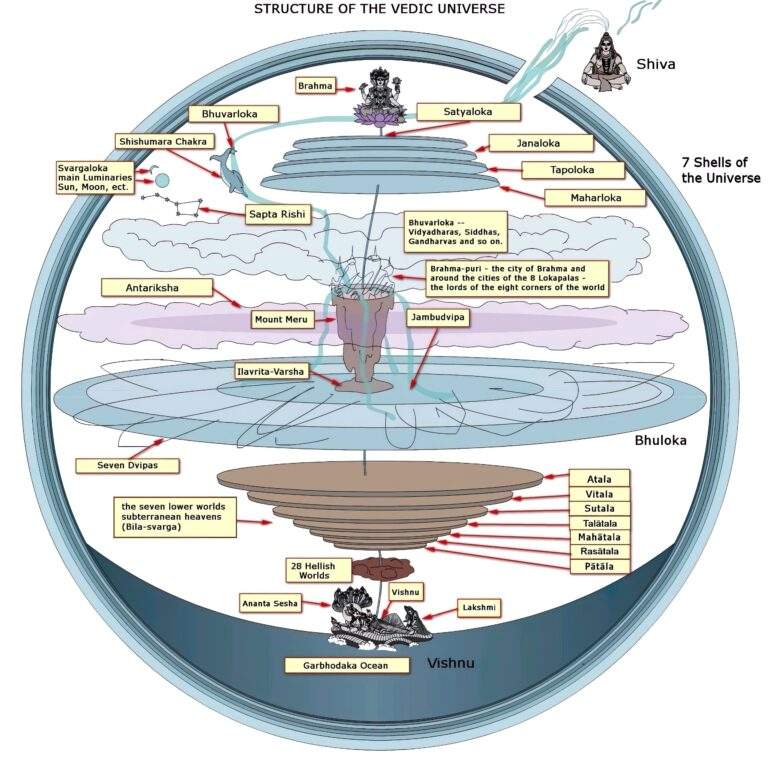
OVERVIEW OF MATERIAL PLANETS
“ Viśvanātha Cakravartī Ṭhākura estimates that,
- Dhruvaloka, the polestar – is 3,800,000 yojanas above the sun.
- Above Dhruvaloka by 10,000,000 yojanas is Maharloka,
- Above Maharloka by 20,000,000 yojanas is Janaloka,
- Above Janaloka by 80,000,000 yojanas is Tapoloka,
- Above Tapoloka by 120,000,000 yojanas is Satyaloka / Brahmaloka.
- Thus the distance from the Sun to Satyaloka is 233,800,000 yojanas, or 1,870,400,000 miles.
( 1 yojana = estimated to be around 12 to 13 kms )
The Vaikuṇṭha planets / spiritual planets – begin 26,200,000 yojanas (209,600,000 miles) above Satyaloka.
Thus the Viṣṇu Purāṇa describes that the covering of the universe is 260,000,000 yojanas (2,080,000,000 miles) away from the sun.
The distance from the sun to the earth is 100,000 yojanas, and below the earth by 70,000 yojanas are the seven lower planetary systems called
- Atala,
- Vitala,
- Sutala,
- Talātala,
- Mahātala,
- Rasātala and
- Pātāla.
Below these lower planets by 30,000 yojanas,
Śeṣa Nāga is lying on the Garbhodaka Ocean.
That ocean is 249,800,000yojanas deep.
Thus the total diameter of the universe is approximately 500,000,000 yojanas, or 4,000,000,000 miles.
If one becomes free from karma and get the mercy of Sri Krishna, one can go back to the topmost spiritual planet – Goloka.
If one is excited to cross all these lokas, one should sincerely practice the Krishna Bhakti & Devotional Service, and go back to one’s own original place of living , ie, Lord Krishna’s eternal kingdom – Goloka.
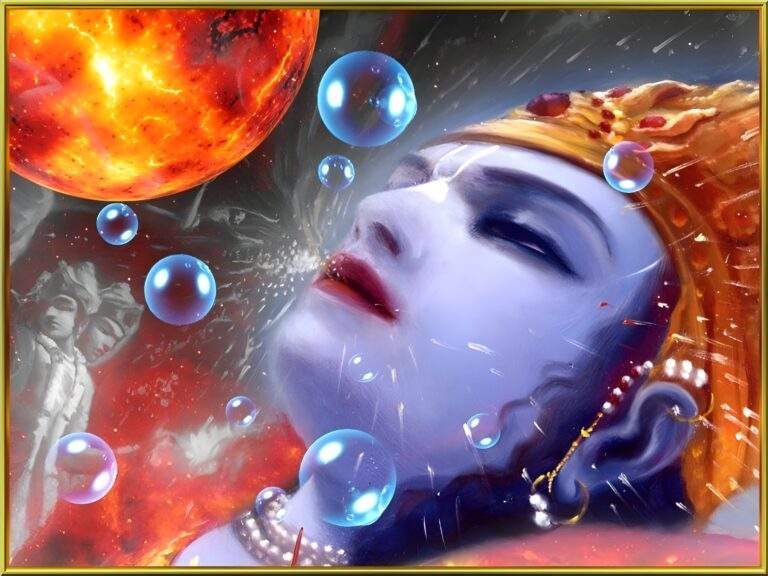
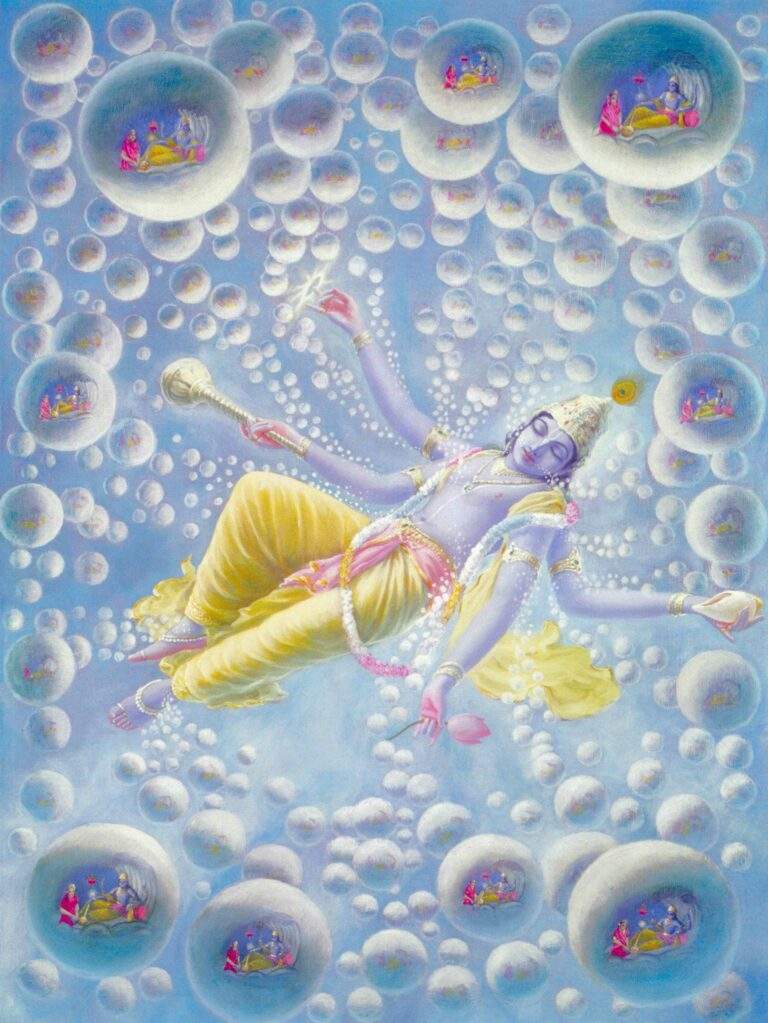
COUNT OF THE UNIVERSES
There are innumerable universes besides this one, and although they are unlimitedly large, they move about like atoms in You ( in Maha Vishnu, an expansion of Sri Krishna ). Therefore You ( Lord ) are called unlimited [ananta]”.
( Srimad Bhagavatam – 6.16.37 )
The origin of the material creation is Mahā-Vishnu, who lies in the Causal Ocean. While He sleeps in that ocean, millions of universes are generated as He exhales, and they are all annihilated when He inhales.
This Mahā-Vishnu is a plenary portion of a portion of Vishnu, Govinda (yasya kalā-viśeṣaḥ). The word kalā refers to a plenary portion of a plenary portion.
- From Sri Krishna / Govinda, comes Balarāma.
- From Balarāma comes Sankarsaṇa.
- From Sankarsaṇa comes Narāyana.
- From Narāyana, the second Sankarsaṇa.
- From the second Sankarsaṇa comes Mahā-Vishnu.
- From Mahā-Vishnu comes Garbhodakasayī Vishnu.
- From Garbhodakasayī Vishnu comes Ksirodakaśāyī Vishnu.
Ksirodakaśāyī Vishnu controls every universe. This gives an idea of the meaning of ananta, unlimited.
This verse describes the coverings of the universe (saptabhir daśa-guṇottarair aṇḍa-kośaḥ).
The 1st covering is earth, the 2nd is water, the 3rd is fire, the 4th is air, the 5th is sky, the 6th is the total material energy, and the 7th is the false ego.
From these 7 coverings of the universe, Beginning with the 1st covering – earth, each covering is 10x times greater than the previous one.
Thus we can only imagine how great each universe is, and there are many millions of universes.
As confirmed by Lord Krishna Himself in Bhagavad Gitā (10.42):
Translation:
“But what need is there, Arjuna, for all this detailed knowledge? With a single fragment of Myself I pervade and support this entire universe.”
The entire material world ( it does not include the spiritual world ) manifests only 1/4th of the Supreme Lord’s energy.
Therefore He is called ananta.
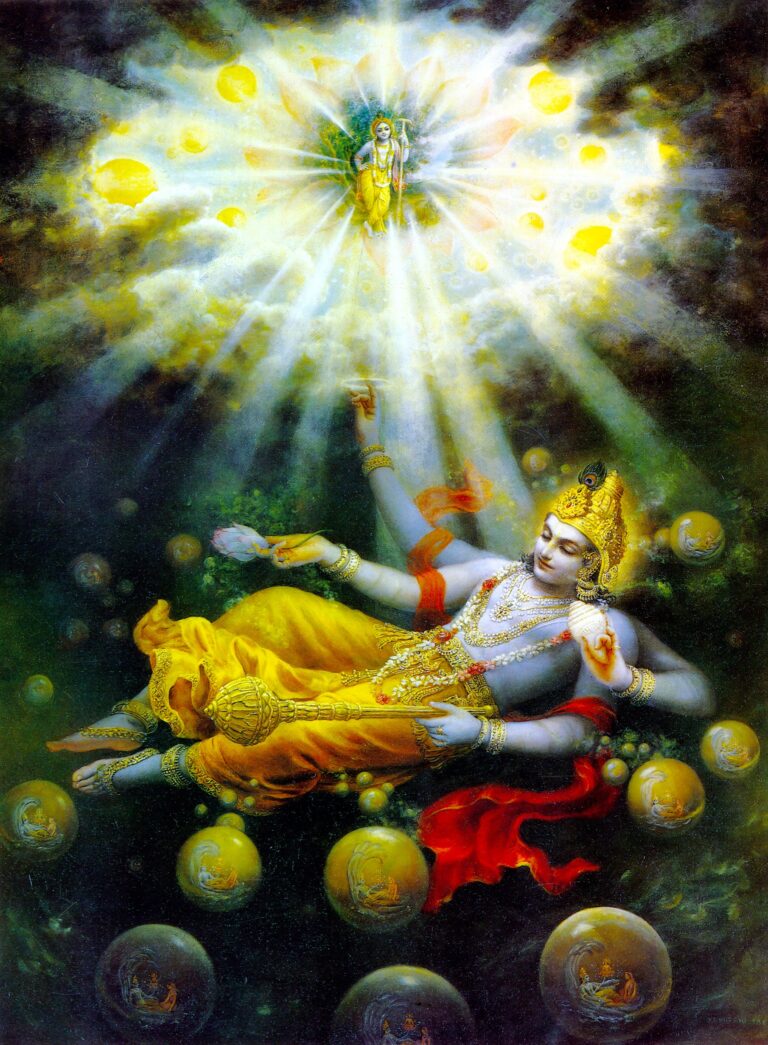

PROCESS OF UNIVERSE CREATION
The Vedic literature confirms that we cannot conclusively understand the Supreme Being by logic alone.
The Bhagavad Gita declares that the Supreme Personality of Godhead, Sri Krishna, who is the creator of both this universe and the spiritual world beyond it, can be understood only by His mercy, when He is pleased to reveal Himself to His faithful devotees.
Although our logic and mental gymnastics cannot rise to embrace the Lord, He can by His omnipotence pierce through the uncertainty and ignorance of His faithful servants and show Himself to them.
The Supreme Lord is aloof from the work of creation, but just how He delegates the creative duties, and to whom, is unique. Unlike ordinary persons, Sri Krishna can expand Himself into innumerable forms, known as plenary expansions, who are equal to Him in power and opulence.
These expansions are all the same Personality of Godhead, Krishna Himself, and yet at the same time They are individuals with independent thoughts and actions.
Brahma-samhita gives the analogy that just as one candle can light many other candles, each with the same power to illuminate, so Sri Krishna, the original Personality of Godhead, can expand Himself into innumerable plenary forms and still maintain His identity as the supreme, original person.
A person’s appearance on millions of television screens at once partially illustrates Krishna’s power to expand, the difference being that the television expansions are only images of the original person and must move and speak as that person does, whereas Krishna’s expansions, although non-different from Him, can act as They please. They are not mere images, but complete individuals.
The Supreme Personality of Godhead Sri Krishna’s first expansion Balarama (Sankarsana) expands Himself as the Maha-Vishnu ( Purusa-avatar ).
This Maha-Vishnu lies down on the Causal Ocean and breathes all the universe from His nostrils.
These innumerable universes are produced from the pores of Maha-Vishnu’s body.
As innumerable particles of dust pass through the tiny holes in a screen, similarly, from the pores of the Maha-Vishnu’s body, innumerable universes emanate.
Simply by glancing the Lord can conceive countless living entities in the womb of material nature. These created Consciousness/ living entities are then divided into three departmental activities according to the three gunas, or modes of material nature which include the mode of goodness, passion, and ignorance.
The entire cosmic manifestation is a combination of all these modes.
The 2nd Purusa-avatar or incarnation of Vishnu is the Garbhodakasayi Vishnu (Maha-Vishnu expands His personality and enters each universe as Garbhodakasayi Vishnu), which enters into all the universe, spreads water from His body, and lies down on that water.
From His navel, the stem of a lotus flower grows, and on that lotus flower the first creature, Brahma, is born.
Within the stem of that lotus flower are 14 divisions of planetary systems, which are created by Brahma.
Within each universe, the Lord is present as the Garbhodakasayi Vishnu, and He maintains each universe and tends to its needs. Although He is within each material universe, the influence of material energy cannot touch Him.
The 3rd Purusa-avatar of Vishnu is Ksirodakasayi Vishnu (Garbhodakasayi Vishnu expands as Kshirodakashayi Vishnu), who then expands Himself unlimitedly to enter the hearts of all the living entities in His particular universe ( as a Paramatama ) This expansion of Vishnu is known as Paramatma, the Supersoul, who accompanies each jiva soul in his search for material pleasure.
EVERYTHING IS SCIENTIFIC.
Kshirodakashayi Vishnu is also an incarnation of the mode of goodness, and He resides on the ocean of milk within the universe.
The scientists has still not reached this far and would surely not till the time they take the shelter of the Ancient Scriptures, Vedas & The Puranas.
In a materialistic worldview, the time has a beginning and cosmologists say that time started along with the so-called Big Bang theory. ( WHICH THEY HAVE NO PROOF OF )
Lord Sri Krishna says in Bhagavad Gita (11.32), कालोऽस्मि – “Time I am”.
At the beginning of each cycle of creation of the universe, Lord Brahma, the first created cosmic living being is born.
A day of Brahma is called a Kalpa and 1 Kalpa consists of a 1000 cycles of 4 yugas, or ages called Satya, Treta, Dvapara, and Kali.
The same number comprises 1 night of Brahma and he lives 100 of such years and then dies.
- Satyayuga lasts 1,728,000 years.
- Tretayuga lasts 1,296,000 years.
- Dvaparayuga lasts 864,000 years.
- Kaliyuga lasts 432,000 years.
Thus 100 years of Lord Brahma is equal to 311 trillion and 40 billion earth years.
Our universe starts with the birth of Lord Brahma and he is – At present a little more than around 50 years old.
The present period is 5,000 years in the Kaliyuga of the 28th – 4 yuga cycle of the 7th Manu of the 1st Kalpa of the 1st day of Brahma in the 2nd half of his life.
Hence, our present universe started about 155.522 trillion (155.522 * 1012) years ago and will end in 155. 518 trillion (155.518 * 1012) years and just after that a new cycle of creation will begin again.
( Srimad Bhagavatam – 1.6.29 )
At the end of the millennium, Brahma begins to enter into the Personality of Godhead Lord Narayana [Maha-Vishnu] along with all creative elements.
The merging of living beings into the body of Maha-Vishnu takes place automatically at the end of Brahma’s 100 hundred years.
But that does not mean that the individual living being ( soul ) loses his identity.
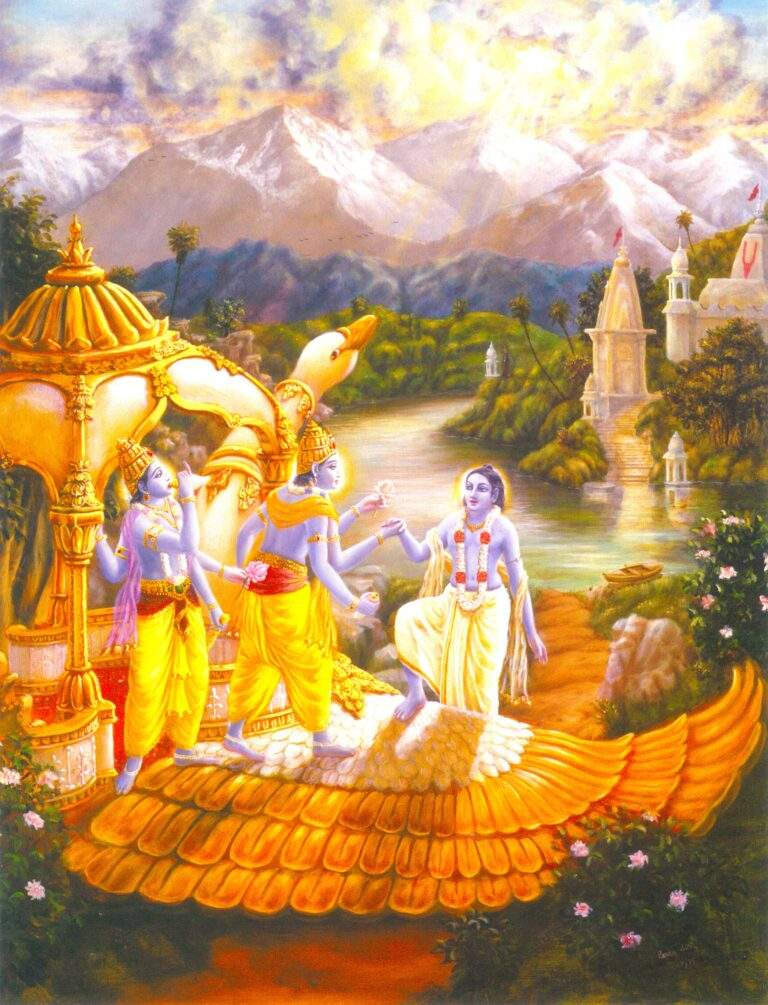
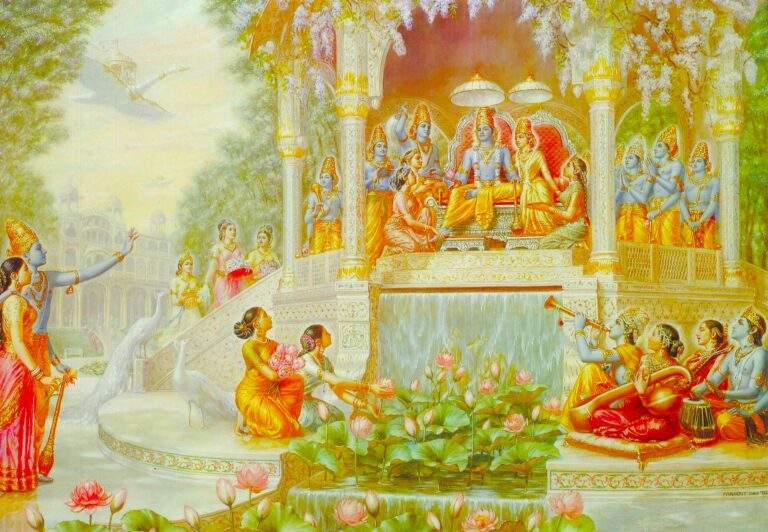
HOW IS IT LIKE, RESIDING ETERNALLY IN THE VAIKUNTHA ?
“ There are many verses in the Brahma-samhita which describe the nature and activities of the spiritual realm.
Life there is eternal, as is everything else in the spiritual world, and full of bliss and knowledge.
It is full of pure devotees who have unlimited facility for their loving service to the Supreme Being.
There are beautiful homes and gardens, with ample vegetables, flowers, and jewels.
Each person is full with all,
- Beauty
- Wealth
- Strength
- Fame
- Knowledge, and
- Bliss.
They also wear the most beautiful of clothes, and fly in wondrous planes around the spiritual planets.
All walking is a dance, and all speech is a song. The water is nectar and the land is touchstone.
In the Srimad-Bhagavatam, 3rd Canto, 15th Chapter, there is the following description of the kingdom of God:
“In the spiritual sky there are spiritual planets known as Vaikunthas, which are the residence of the Supreme Personality of Godhead and His pure devotees and are worshiped by the residents of all the material planets.
In the Vaikuntha planets all the residents are similar in form to the Supreme Personality of Godhead. They all engage in devotional service to the Lord without desires for sense gratification.
“In the Vaikuntha planets is the Supreme Personality of Godhead, who is the original person and who can be understood through the Vedic literature. He is full of the uncontaminated mode of goodness, with no place for passion or ignorance. He contributes religious progress for the devotees.
“In those Vaikuntha planets,
[ FORESTS IN THE VAIKUNTHAS: ]
- There are many forests which are very auspicious.
- In those forests the trees are desire trees [trees that fulfill all desires],
- In all seasons they are filled with flowers and fruits because everything in the Vaikuntha planets is spiritual and personal.
- “In the Vaikuntha planets the inhabitants fly in their airplanes, accompanied by their wives and consorts, and eternally sing of the character and activities of the Lord, which are always devoid of all inauspicious qualities.
[ FLOWERS & BIRDS IN THE VAIKUNTHAS: ]
- While singing the glories of the Lord, they deride even the presence of the blossoming madhavi flowers, which are fragrant and laden with honey.
- When the king of bees hums in a high pitch, singing the glories of the Lord, there is a temporary lull in the noise of the pigeon, the cuckoo, the crane, the chakravaka, the swan, the parrot, the partridge, and the peacock.
- Such transcendental birds stop their own singing simply to hear the glories of the Lord.
- Although the flowering plants like the mandara, kunda, kurabaka, utpala, champaka, arna, punnaga, nagakesara, bakula, lily, and parijata are full of transcendental fragrance, they are still conscious of the austerities performed by tulasi, for tulasi is given special preference by the Lord, who garlands Himself with tulasi leaves.
[ PLANES IN THE VAIKUNTHAS: ]
“The inhabitants of Vaikuntha travel in their airplanes made of –
- Lapis lazuli
- Emerald
- Gold.
Although crowded by their consorts, who have large hips and beautifully smiling faces, they cannot be stimulated to passion by their mirth and beautiful charms. The ladies in the Vaikuntha planets are as beautiful as the goddess of fortune herself.
Such transcendentally beautiful ladies, their hands playing with lotuses and their leg bangles tinkling, are sometimes seen sweeping the marble walls, which are bedecked at intervals with golden borders, in order to receive the grace of the Supreme Personality of Godhead.
“The goddesses of fortune worship the Lord in their own gardens by offering tulasi leaves on the coral-paved banks of transcendental reservoirs of water.
While offering worship to the Lord, they can see on the water the reflection of their beautiful faces with raised noses, and it appears that they have become more beautiful because of the Lord’s kissing their faces.
“It is very much regrettable that unfortunate people do not discuss the description of the Vaikuntha planets but engage in topics which are unworthy to hear and are only on the material platform and which bewilder one’s intelligence.
Those who give up the topics of Vaikuntha and take to talk of the material world are thrown into the darkest region of ignorance.”
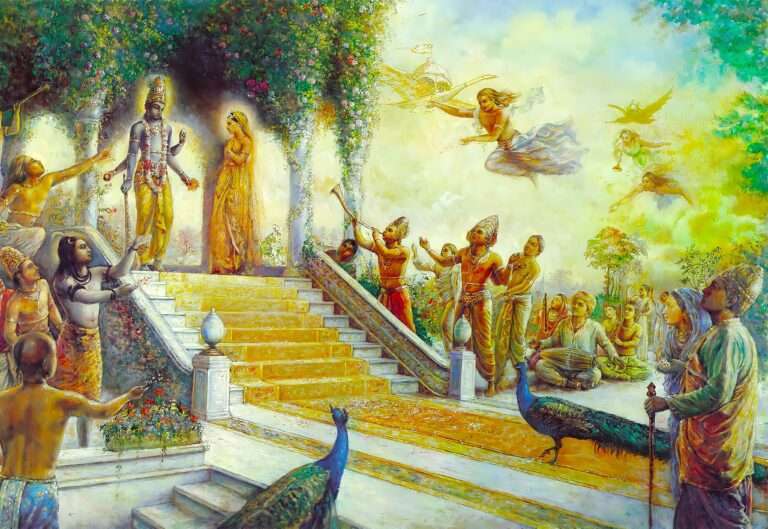

WHAT ARE 5 AMAZING FEATURES OF VAIKUNTHA PLANETS, FROM THE MANY ?
“ Vaikuntha Planets Have No Anxiety:
The living entities in the Vaikuntha planets live with no anxiety.
Vaikuntha itself means- ‘without any anxiety.’
In the material planets, everyone is in full of anxiety, He may be human or an ant, small, very insignificant. He may be a very rich man or a very poor man. The anxiety is there.
Why? सदा समुद्विग्नधियामसद्ग्रहात् । – [ Srimad-Bhagavatam 7.5.5 ]
“Because they have accepted this material body ( thinking “I am this body, and everything belonging to this body is mine.” )
No Māyā In Vaikuntha:
In the spiritual planets of Vaikuntha, there is no influence of māyā or the departments of existence.
Within the body, there are five different departments of existence, known as
- Anna-maya ( consciousness of food )
- Prāṇa-maya (the consciousness of being alive)
- Mano-maya ( consciousness of one’s existence )
- Vijnāna-maya ( consciousness of mental platform )
- Ananda-maya ( blissful life of knowledge and eternity ).
As said in the Vedānta-sūtra – आनन्दमयोऽभ्यासात् , as long as the living entities are situated in the lower four stages of life— anna-maya, prāṇa-maya, mano-maya and vijnāna-maya— they are considered to be in the material condition of life, but as soon as one reaches the stage of ānanda-maya, he is a liberated soul.
No Birth & Death Cycle in Vaikuntha:
No birth-death cycle means, no to the cycle of misery.
In the Supreme abode ( The spiritual world ), there is no birth, death, old age, and disease, thus the souls are free.
In this material world, everyone is trying not to die, not to become old, not to get diseases.
This is natural because, by nature, we are not subjected to these things, thus our endeavor, our activity, is struggling, to become death-less, birth-less and disease-less.
The Supreme Lord is sac-cid-ānanda-vigraha, eternal, blissful, knowledgeable, similarly, we, being part and parcel of the Lord are also of the same quality and we are suffering because we have accepted our association with this material world.
Vaikuntha – The Abode of Eternal Bliss:
In Vaikuntha, everyone is full of transcendental bliss. Ānandamayo ‘bhyāsāt (Vedānta-sūtra 1.1.12). By nature, they are ānandamaya, always jolly.
Also, in this material world, when we become free from the material concept of life, and when one is aware of the fact that “I am not this material body; I am the spirit soul,” he becomes jolly because he acquires the spiritual quality.
No Desires & No Lamentations in Vaikuntha:
ब्रह्मभूत: प्रसन्नात्मा न शोचति न काङ्क्षति ।
[ Bhagavad-gita 18.54 ]
“There is no desire, and there is no lamentation.”
In this material world, one who is not God-conscious is always hankering, and if he loses something, he’s lamenting.
But in the Vaikuntha – The spiritual world, when you are under the surrendered state of the Lord, the hankering and lamentation end, because, where there is God, there is no question of lamentations.
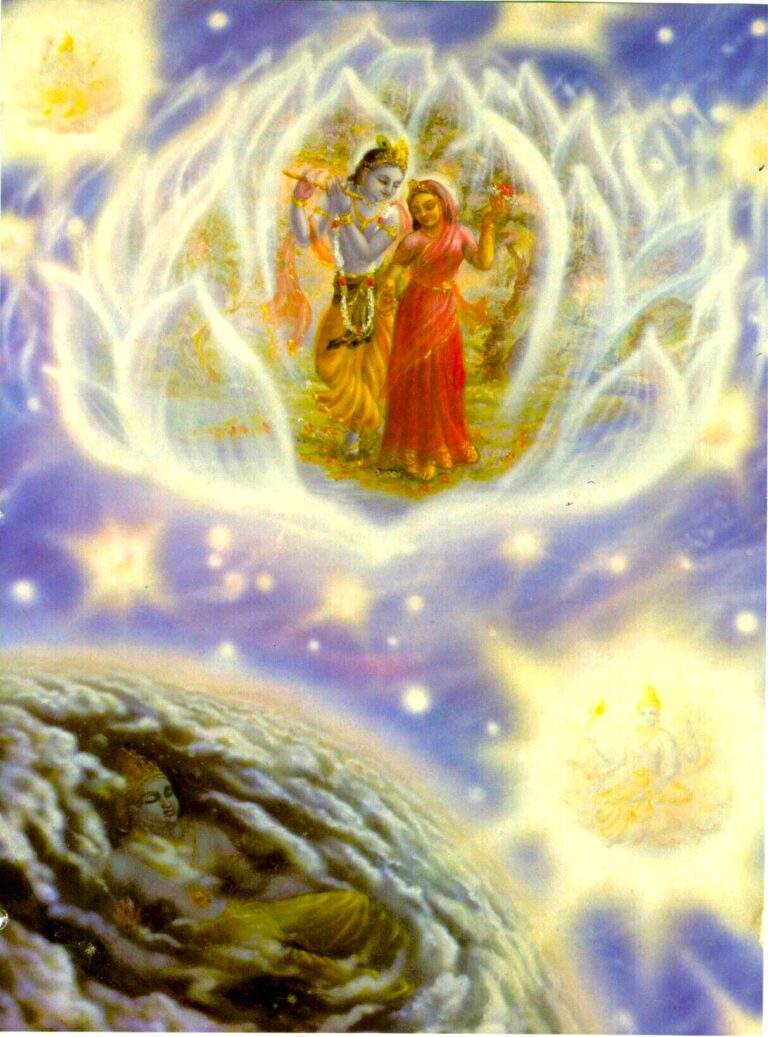

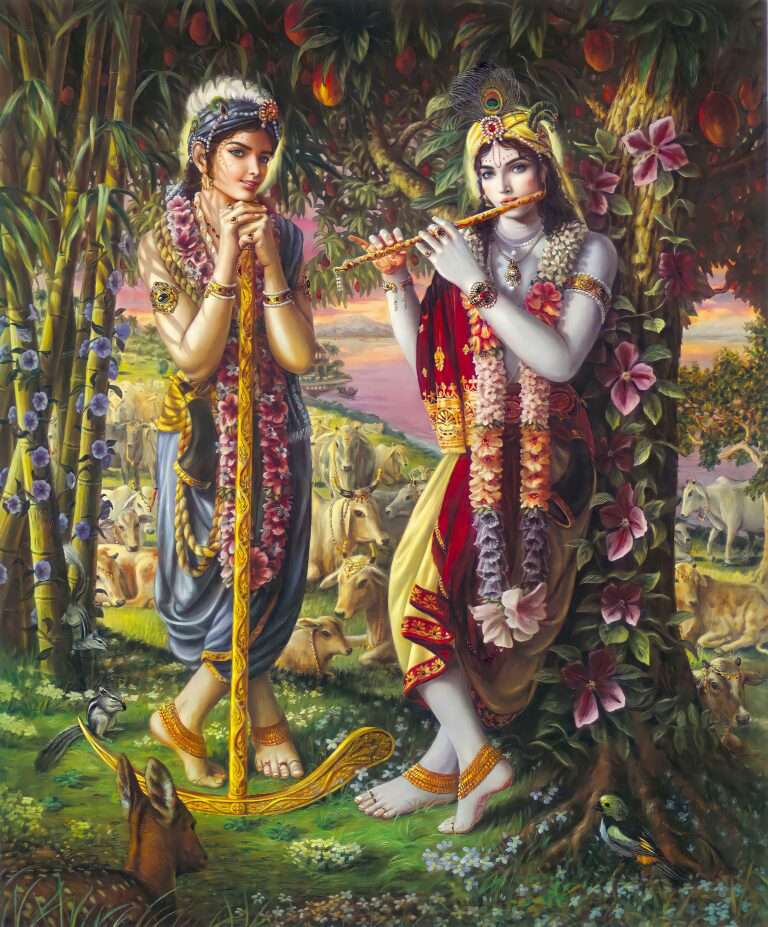
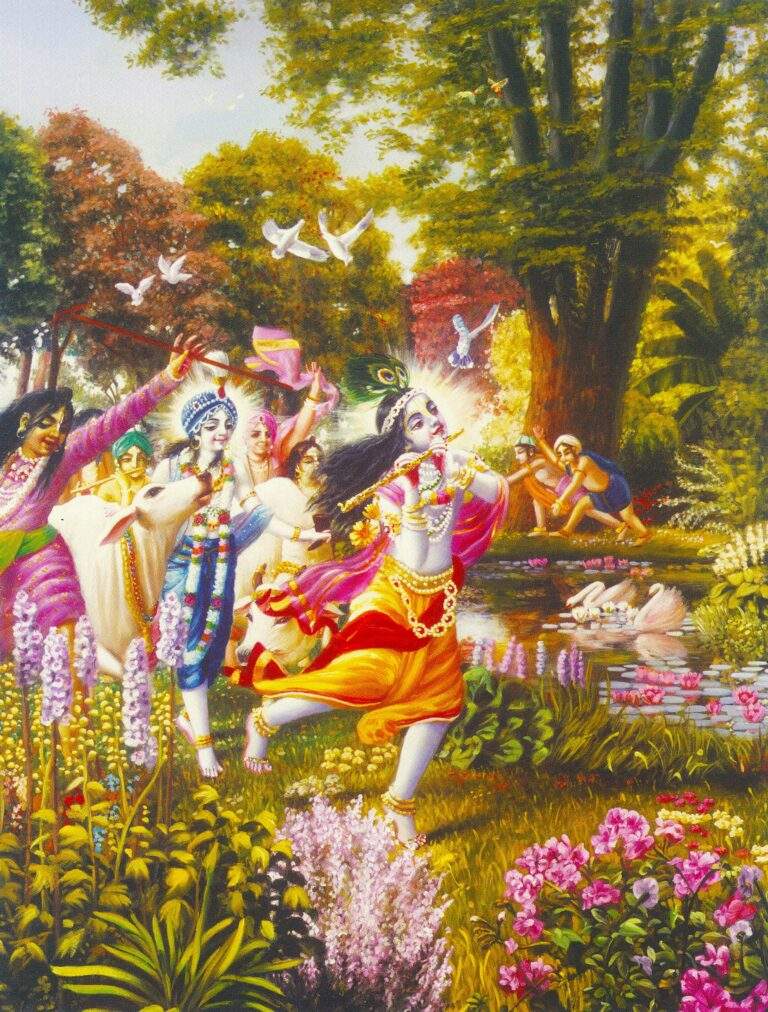
TOPMOST SPIRITUAL PLANET FROM THE VAIKUNTHAS - GOLOKA VRINDAVAN
- Lowest of all is located Devī-dhāma [mundane world],
- Next above it is Maheśa-dhāma [abode of Maheśa];
- Above Maheśa-dhāma is placed Hari-dhāma [abode of Hari] and
- Above them all is located Sri Krishna’s own realm named Goloka.
He continues, I adore the primeval Lord Govinda, who has allotted their respective authorities to the rulers of those graded realms.
The realm of Goloka stands highest above all others.
Lord Brahmā looking up to the higher position of Goloka is speaking of the other abodes from the point of view of his own abode ( Satyaloka ):
- The first in order is this mundane world called Devi-dhāma consisting of the 14 worlds ( 14 lokas – Patal-loka, Bhurloka, Swargaloka, etc.)
2. Next above Devī-dhāma is located Shiva-dhāma one portion of which, called Mahakāla-dhāma, is enveloped in darkness; interpenetrating this portion of Shiva-dhāma there shines the Sadāśhivaloka, full of great light.
3. Above the same appears Hari-dhāma or the transcendental Vaikuṇṭhaloka.
The potency of Devi-dhāma, in the form of the extension of Māyā, and that of Shivaloka, consisting of time, space and matter, are the potency of the separated particles pervaded by the penumbral reflection of the subjective portion of the Divinity.
But Hari-dhāma is ever resplendent with transcendental majesty and the great splendor of all-sweetness predominates over all other majesties in Goloka.
The Supreme Lord Govinda by his own direct and indirect power has constituted those respective potencies of those realms.
Lord Brahmā, being desirous of satisfying Govinda, practiced the cultural acts for Krishna in Goloka, Lord of Svetadvīpa, for a long time.
His meditation ran thus, “There exists a divine lotus of a thousand petals, augmented by millions of filaments, in the transcendental land of Goloka.
On its whorl, there exists a great divine throne on which is seated Sri Krishna , the form of eternal effulgence of transcendental bliss, playing on His divine flute resonant with the divine sound, with His lotus mouth.
He is worshiped by His amorous milkmaids with their respective subjective portions and extensions and also by His external energy [who stays outside] embodying all mundane qualities.”
[ Śrī brahma-saṁhitā 5.26 ]
“Goloka, also called Vrindavana, is always full of cows.
- There are many waterfalls, which are always pouring water,
- The sound is so sweet that it covers the sound of the crickets.
- Because water flows all over, the forest always looks very green and beautiful.
“The inhabitants of Goloka Vrindavan are never disturbed by the scorching heat of the sun or high summer temperatures.
The lakes of Vrindavan are surrounded by green grasses, and various kinds of lotus flowers bloom there.
The air blowing in Vrindavan carries the aromatic pollen of those lotus flowers.
When the particles of water from the waves of the Yamuna River, the lakes, and the waterfalls touch the bodies of the inhabitants of Vrindavan, they automatically feel a cooling effect.
“Krishna, the reservoir of pleasure, blowing His flute, accompanied by His elder brother Balarama and the other cowherd boys and the cows, enters the beautiful forest of Vrindavan to enjoy the atmosphere.
They walk into the midst of newly grown leaves of trees whose flowers resembled peacock feathers.
They are garlanded by those flowers and decorated with saffron chalk.
Sometimes they are dancing and singing and sometimes wrestling with one another.
While Krishna dances, some of the cowherd boys sing and others play on flutes; some bugle on buffalo horns or clap their hands, praising Krishna, ‘Dear brother, You are dancing very nicely.’ ”
Lord Brahma says, “I worship Govinda, the primeval Lord, the first progenitor, who is tending cows yielding all desires in abodes built with spiritual gems and surrounded by millions of purpose trees.
He is always served with great reverence and affection by hundreds and thousands of goddesses of fortune.”
– Sri Brahma-samhita 5.29.
Lord Brahma says,
I worship Govinda, the primeval Lord, residing in His own realm, Goloka, with Sri Rādhā, resembling His own spiritual figure, the embodiment of the ecstatic potency possessed of the sixty-four artistic activities, in the company of Her confidantes, embodiments of the extensions of Her bodily form, permeated and vitalized by His ever-blissful spiritual rasa.
– Sri Brahma-samhita 5.37.
He continues,
I worship that transcendental seat, known as Śvetadvīpa where as loving consorts the Lakṣmīs in their unalloyed spiritual essence practice the amorous service of the Supreme Lord Krishna, as their only lover;
- Where every tree is a transcendental purpose tree
- Where the soil is the purpose gem
- All water is nectar
- Every word is a song
- Every gait is a dance
- The flute is the favorite attendant
- Effulgence is full of transcendental bliss and the supreme spiritual entities are all enjoyable and tasty
- Where numberless milk cows always emit transcendental oceans of milk
- Where there is eternal existence of transcendental time, who is ever present and without past or future and hence is not subject to the quality of passing away even for the space of half a moment.
That realm is known as Goloka only to a very few self-realized souls in this world.
– Sri Brahma-samhita 5.56.
He continues,
I worship Govinda, the primeval Lord, who is adept in playing on His flute, with blooming eyes like lotus petals with head decked with peacock’s feather, with the figure of beauty tinged with the hue of blue clouds, and His unique loveliness charming millions of Cupids.
– Sri Brahma-samhita 5.30.
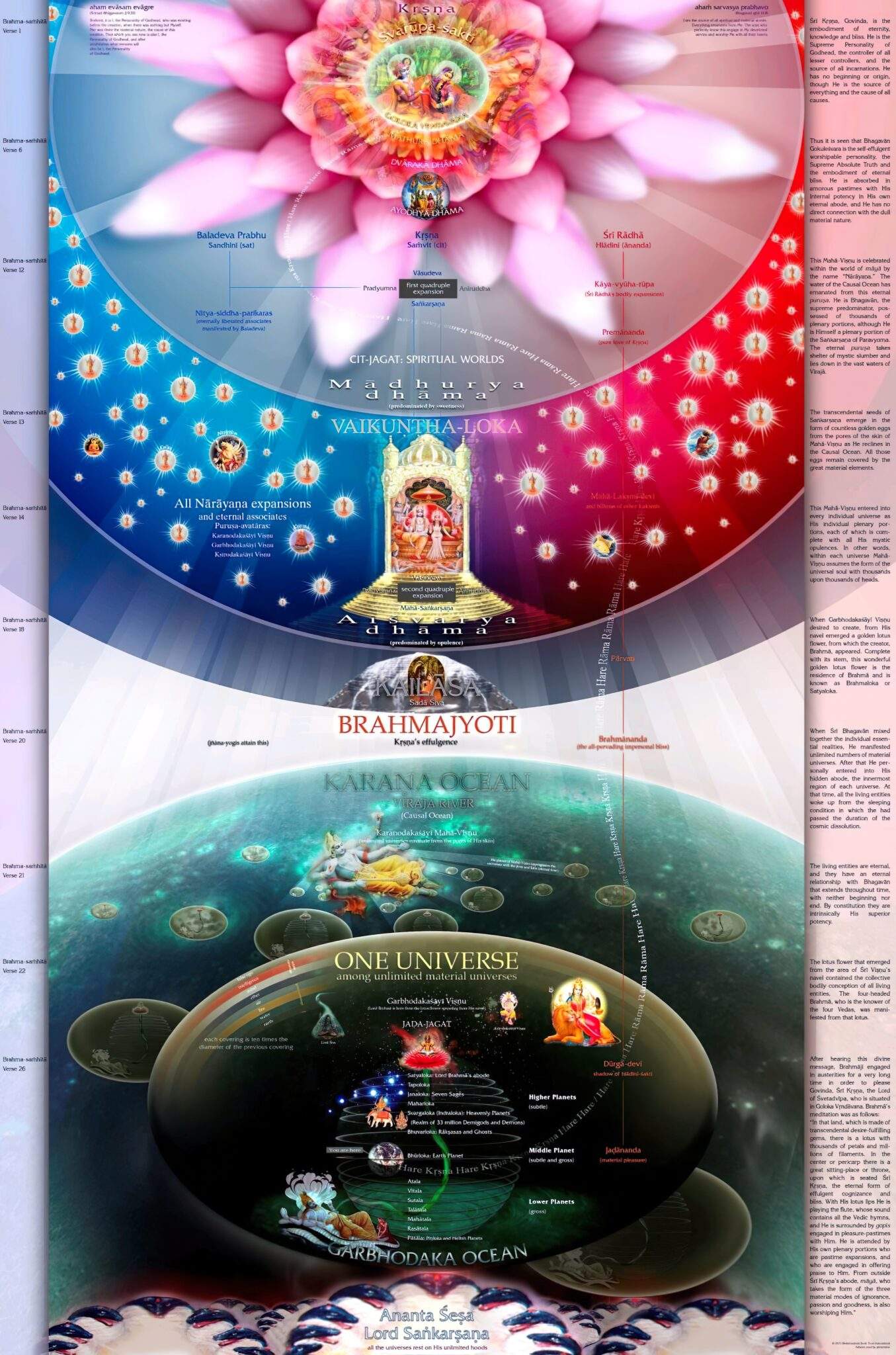

MAP OF THE SPIRITUAL WORLD - PREPARED FROM THE VEDIC SCRIPTURES

HOW SHOULD I BECOME ELIGIBLE TO ENTER INTO THE ABODE OF GOD AFTER THIS LIFE ?
“ It is clearly stated in Bhagavad Gītā that only by bhakti, or devotional service, can one enter into the Vaikuntha (spiritual) planetary system.
In all the Vaikunṭhas there is only one Supreme Godhead, Lord Krishna, who has expanded Himself into millions and millions of plenary portions.
These plenary expansions are four-armed, and They preside over innumerable spiritual planets.
They are known by a variety of names:
- Puruṣottama,
- Trivikrama,
- Keśava,
- Mādhava,
- Aniruddha,
- Hṛṣīkeśa,
- Saṅkarṣaṇa,
- Pradyumna,
- Śrīdhara,
- Vāsudeva,
- Dāmodara,
- Janārdana,
- Nārāyaṇa,
- Vāmana,
- Padmanābha, and so on.
“ If a living entity has to reach Sri Krishna’s supreme abode, then one must practice bhakti-yoga. The word bhakti means “devotional service,” or, in other words, submission to the Supreme Lord Krishna clearly says, पुरुष: स पर: पार्थ भक्त्या लभ्यस्त्वनन्यया ।.”
So, to reach the spiritual abode of the Lord, we must engage in pure devotional service to Sri Krishna.
One must engage the time of his / her life in the below activities to develop a sincere devotional service in their life,
- Chanting the holy names of the Lord regularly.
- Listening / Doing the Kirtana regularly.
- Should hear / read the Srimad Bhagavatam.
- Should hear / read the Bhagavad Gita.
- Should read Srila Prabhupada books ( which are the extracts of the vedas & puranas in multiple translations ).
- Staying away from the Bad association.
- Should associate with the saints / devotee of the Lord.
- Listen to the Kathas.
- Worshipping the deity of Lord Sri Radha Krishna / Lord Hari at your house temple & much more.
Regularly getting engaged in the above mentioned activities sincerely, would help one progress in their lives spiritually and one could become eligible to go back to home back to Godhead.
